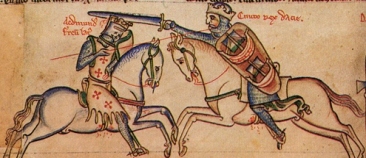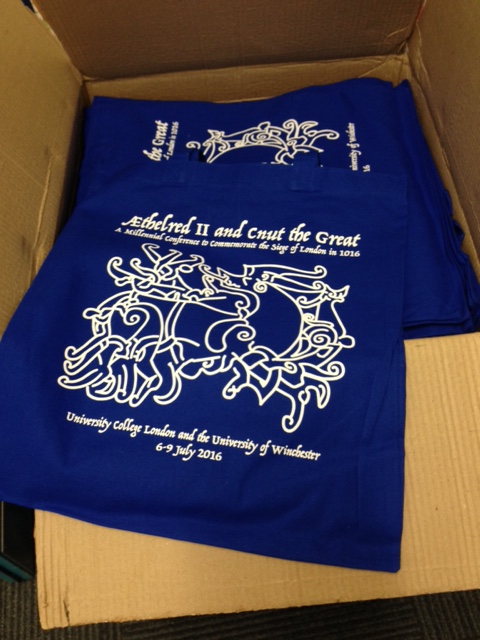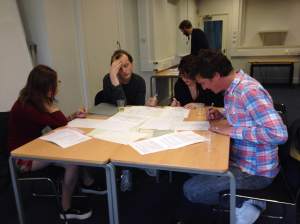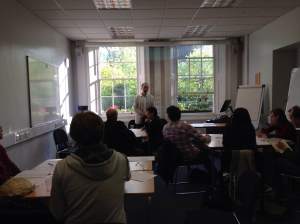Thanks to everyone who came to ‘England and Europe: the Medieval Perspective’, running as part of the UCL Festival of Culture last week. We had a great turnout and an interesting discussion about what medieval studies can contribute to current debates about government, immigration and Britain’s membership of the EU.
Cnut’s coronation as England’s king is a moment in history that tends to be upstaged by another, more famous conquest. 1066 and William of Normandy’s rule certainly changed forever Britain’s – especially England’s – relationship with her European neighbours.

Fifty years earlier, however, the year 1016 saw a Danish conquest of England and the coronation of the man who would eventually become king of Denmark, England and parts of Norway and Sweden. As a young man, Cnut had accompanied his father, Sveinn Forkbeard, on a series of raids in England. In 1013 they managed to force the Anglo-Saxon King, Aethelred the Unready, into exile, and Sveinn ruled briefly as king of England. But he died the following year and Cnut was forced back to Denmark. Cnut wasn’t finished with England, however. In September 1015 Cnut’s fleet appeared off the coast at Sandwich and the next several months saw a series of battles between the Anglo-Saxons and the invading Danish army. King Aethelred died in April of 1016. His son Edmund eventually agreed to divide the country with Cnut, but when Edmund died in November of the same year, Cnut succeeded to the entire kingdom. He ruled England until his death in 1035.
Short-lived as it was, Cnut’s reign arguably set the stage for the Norman Conquest in 1066. His rule drew England firmly into the Scandinavian political and cultural spheres, but his rule also had a marked international dimension. As king of England, Cnut had to manage not only a mixed, Anglo-Danish population at home, but also a complex political landscape in Europe. The upcoming EU referendum made the organisers of this project realise that our exploration of similar issues in the medieval period had potentially much to offer to current debate.
Erin Goeres (UCL) started off the discussion with a bit of background about the project and King Cnut in particular. Richard North (UCL) then spoke about the political situation in England on the eve of Cnut’s invasion, noting the importance of Scandinavian raiding, trading and settlement in England well before Cnut’s arrived, and setting Cnut’s conquest in the wider context of early medieval Europe. Alison Finlay (Birkbeck) gave us a flavour of how medieval Scandinavian sources portrayed Cnut, in particular the Cnut ‘brand’ promoted by the king’s poets and advisors. Timothy Bolton (Bloomsbury Auctions) spoke about what sort of leader Cnut was, and how he negotiated the changing political landscape at home and abroad. Finally, Carolin Esser-Miles (Winchester) considered the English sources and Anglo-Saxon writers’ representations of Cnut; she linked this to current discussions about immigration, multiculturalism and ‘English’ and ‘European’ identities.
Some members of the public were interested in the economic dimension of Cnut’s reign and wondered how this compared to the current status of Germany, for example, or of Greece. Other audience members wanted to know more about how Cnut’s rule had affected England in a local sense, asking questions about specific locations in Cheshire and around London. Although the roundtable was only scheduled to last for an hour, the debate continued for sometime afterwards at the drinks reception, no doubt helped in part by the delicious Hungarian brandy generously donated by our colleagues at the School for Eastern European and Slavonic Studies – many thanks indeed!
























 became somehow beautiful through the addition of kennings.
became somehow beautiful through the addition of kennings.